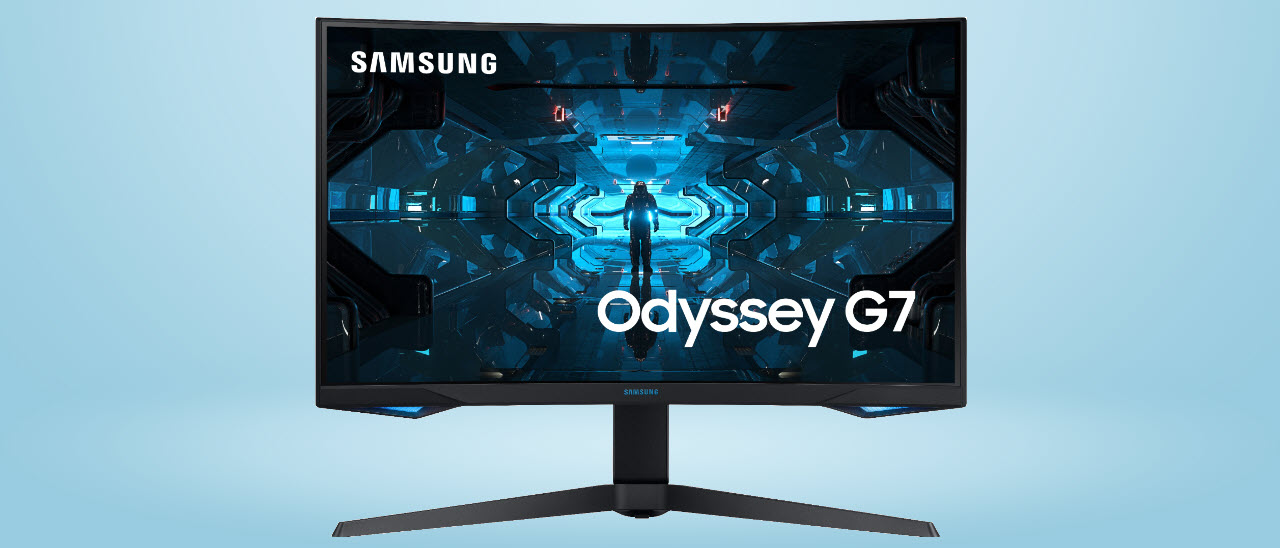Why you can trust Tom's Hardware
Viewing Angles
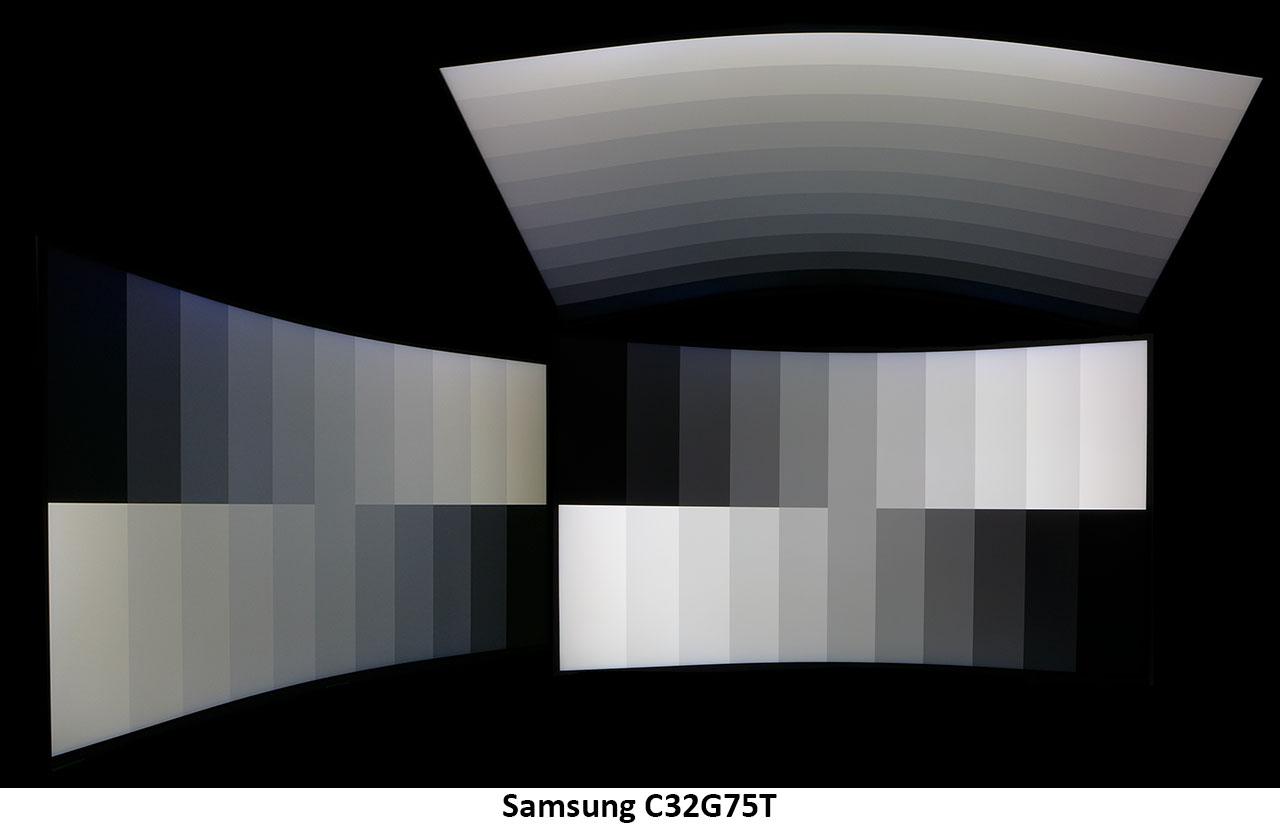
VA is not the best choice of panel for off-axis viewing, but the Odyssey G7’s curvature means it’s unlikely to be shared. A single user sitting at a comfortable distance will see no issues. At 45 degrees, there is a slight purple tint and a 40% brightness reduction. You’ll see the same dimming when viewing the monitor from the top with a shift to green and red. In either case, detail remains visible at all brightness levels, but the image looks a little washed out.
Screen Uniformity
To learn how we measure screen uniformity, click here.
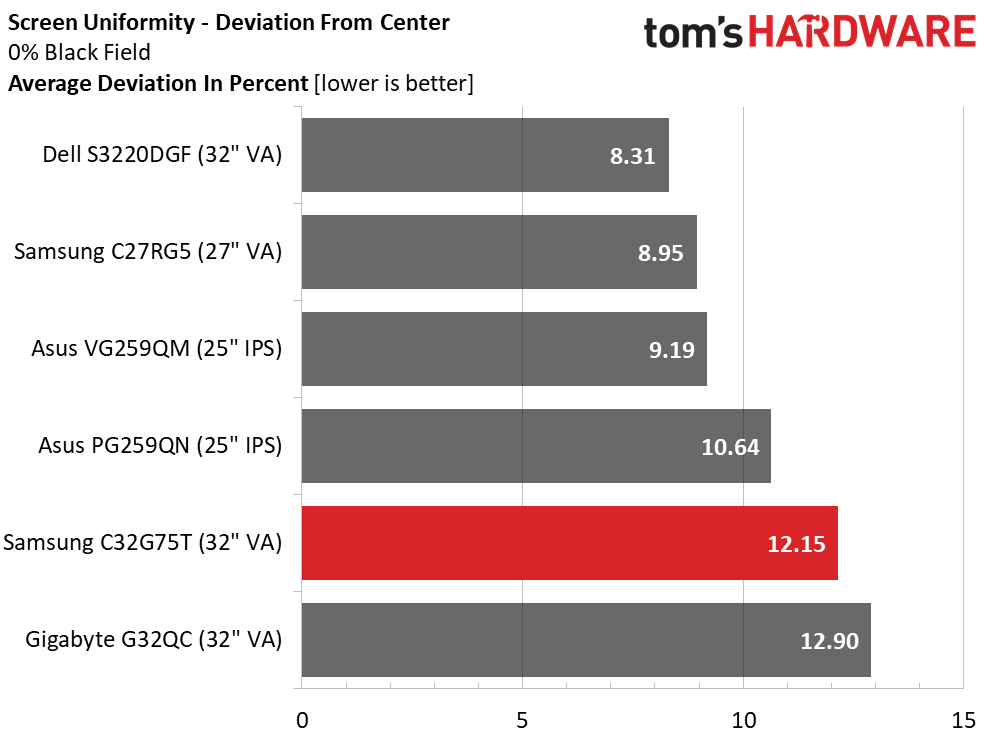
Considering the C32G75T’s extreme curve, one might expect some glow or bleed, but our sample showed none. We measured a small hot spot in the upper left corner, but that was all. No other color or tonal uniformity issues were visible.
Pixel Response and Input Lag
Click here to read up on our pixel response and input lag testing procedures.
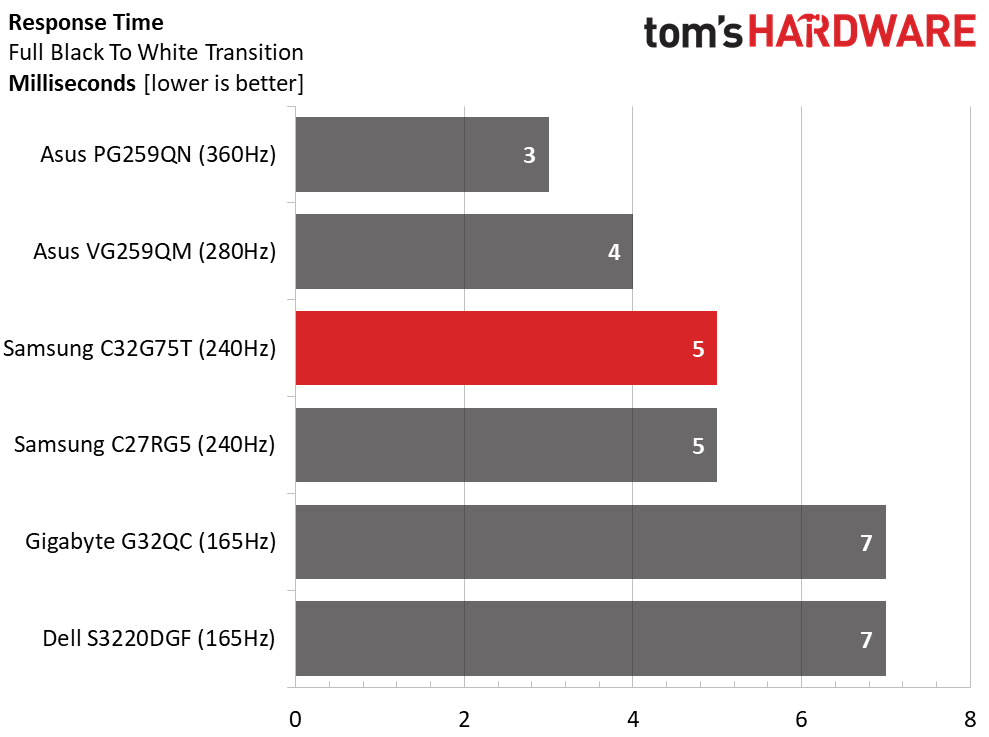
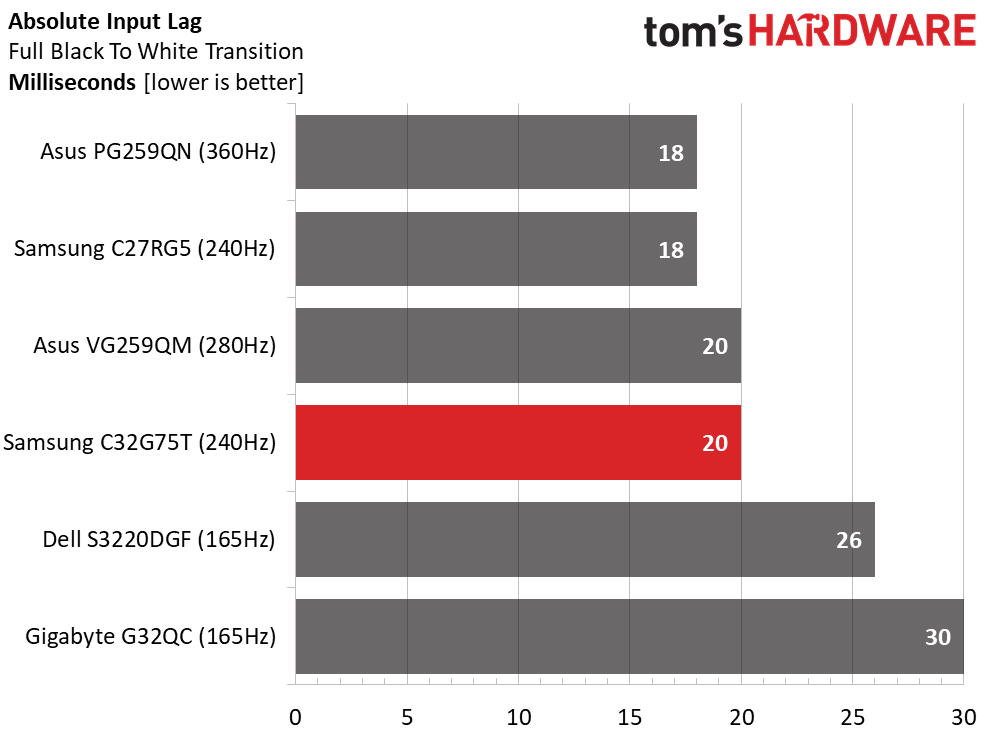
Our comparison chart clearly shows the differences and benefit of different refresh rates. A 240 Hz screen like the C32G75T will draw a full frame in 5ms. 280 Hz lops off 1ms, and the 360 Hz PG259QN takes only 3ms to cover the screen. Any of these monitors will appear to have no motion blur, but a 5ms response time definitely looks better to the eye than 7ms.
The Odyssey G7 also delivers super-low input lag with a total time of 20ms. Interestingly, the 240 Hz CRG5 matched the 360 Hz Asus in this test, which measures the time from control input to full-frame render. The results presented above are impressive. In practice, any of the top four displays will satisfy gamers of all skill levels.
Get Tom's Hardware's best news and in-depth reviews, straight to your inbox.
Current page: Viewing Angles, Uniformity, Response and Lag
Prev Page HDR Performance Next Page Conclusion
Christian Eberle is a Contributing Editor for Tom's Hardware US. He's a veteran reviewer of A/V equipment, specializing in monitors. Christian began his obsession with tech when he built his first PC in 1991, a 286 running DOS 3.0 at a blazing 12MHz. In 2006, he undertook training from the Imaging Science Foundation in video calibration and testing and thus started a passion for precise imaging that persists to this day. He is also a professional musician with a degree from the New England Conservatory as a classical bassoonist which he used to good effect as a performer with the West Point Army Band from 1987 to 2013. He enjoys watching movies and listening to high-end audio in his custom-built home theater and can be seen riding trails near his home on a race-ready ICE VTX recumbent trike. Christian enjoys the endless summer in Florida where he lives with his wife and Chihuahua and plays with orchestras around the state.
